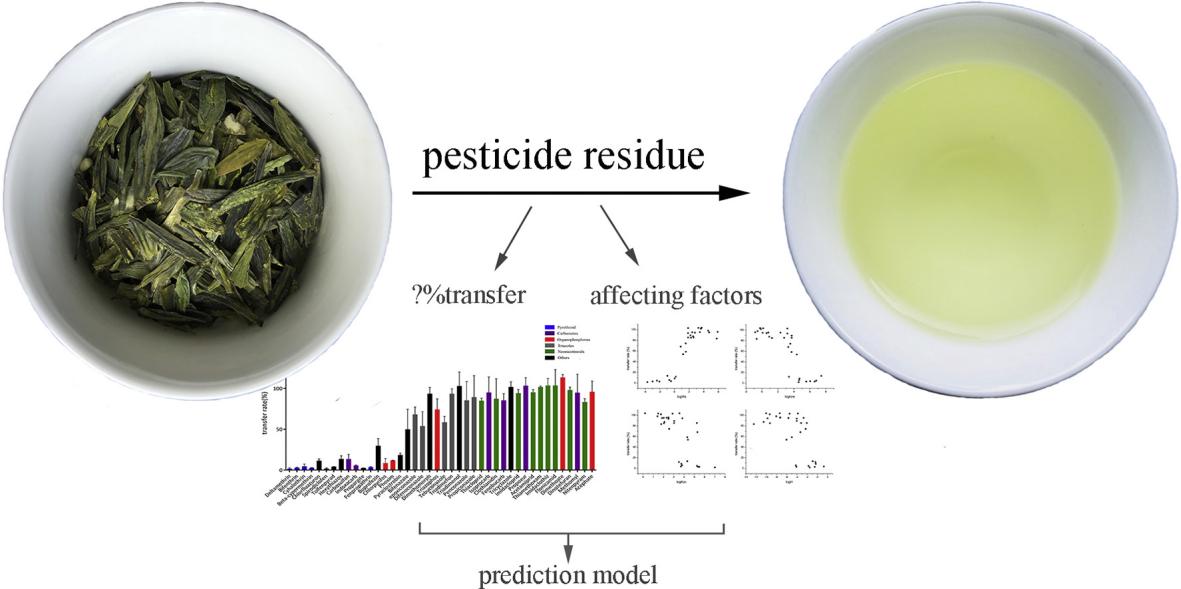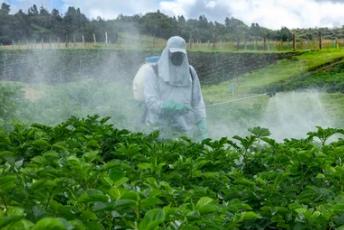Tea is second only to water as the most commonly consumed beverage and is recognized as one of the most popular health beverages for consumers in the 21st century. Insecticides are widely used in the tea production process to control pests and thus increase tea production. However, addressing pest problems can lead to another problem due to the choice and amount of pesticides used. High pesticide residues are often detected in raw and processed teas, making it the biggest headache for tea users today. The quality and safety of tea are of wide concern, so high throughput pesticide screening is essential to ensure tea safety and reduce tea economic losses when the maximum pesticide residue limits are exceeded.
 Fig.1. Transfer of pesticide residue during tea brewing. (Wang X, et al, 2019)
Fig.1. Transfer of pesticide residue during tea brewing. (Wang X, et al, 2019)

In many countries and regions, including Europe, maximum residue limits (MRLs) for pesticides in tea have been established for quality control and consumer health protection. As a recognized leader in tea testing, Lifeasible can help you develop the best tea pesticide residue testing solution to detect residues of organochlorine pesticides (OCPs), organophosphorus pesticides (OPPs), organonitrogen pesticides, or carbamates in tea.
Our laboratories establish clear and straightforward methods to analyze various pesticides in tea. Our tea pesticide residue detection solutions allow innovative and in-depth techniques to detect multiple pesticide residues at low concentrations. These techniques include liquid or gas chromatography coupled with tandem mass spectrometry (LC-MS/MS or GC-MS/MS), hybrid methods (liquid chromatography + gas chromatography), nanoparticles for LC and GC, etc. General tea pesticide residue analysis is performed in a certain sequence of steps, starting with an extraction procedure aimed at separating pesticide analytes from the sample and the subsequent use of spectroscopic techniques for pesticide separation, identification, and quantification.
Considering the complexity of tea related to the presence of pigments, alkaloids, and polyphenols, our team of experienced scientists will work closely with you to find simple and reliable analytical solutions for identifying specific pesticide residues. The pesticide residues in tea that we can detect include, but are not limited to:
Lifeasible aims to provide a variety of fast, simple, inexpensive, durable, and safe methods for the routine analysis of a wide range of pesticide residues in tea. Our efficient customer-focused service will guarantee the quality of your results and save you time and money. If you are interested in our solutions, please contact us for technical consultation and quotation.
Reference
Lifeasible has established a one-stop service platform for plants. In addition to obtaining customized solutions for plant genetic engineering, customers can also conduct follow-up analysis and research on plants through our analysis platform. The analytical services we provide include but are not limited to the following:
Get Latest Lifeasible News and Updates Directly to Your Inbox
Adaptive Evolutionary Mechanism of Plants
February 28, 2025
Unraveling Cotton Development: Insights from Multi-Omics Studies
February 27, 2025